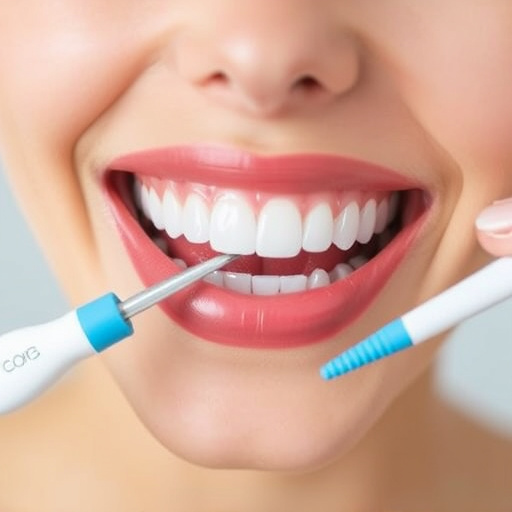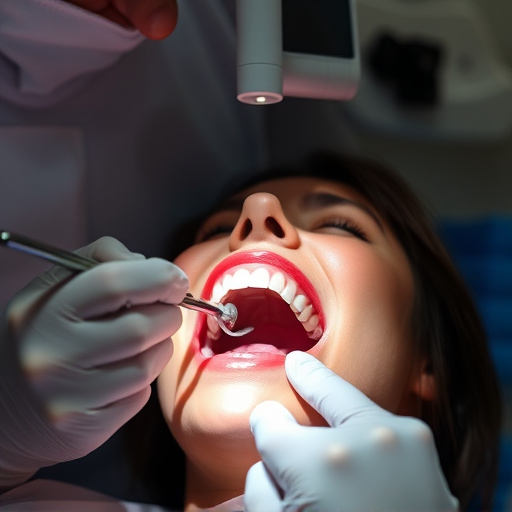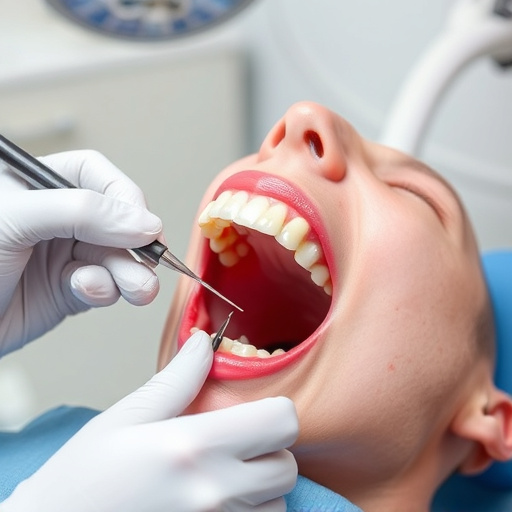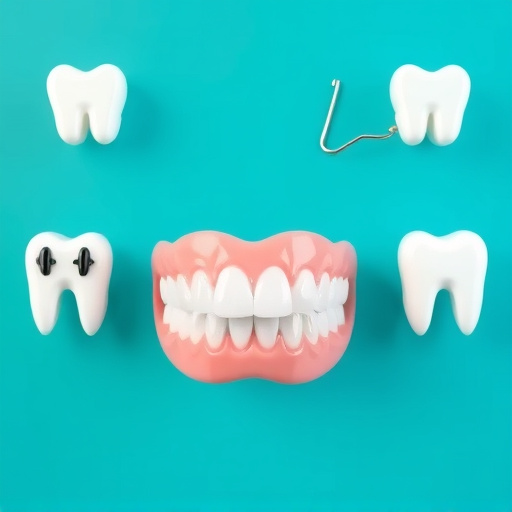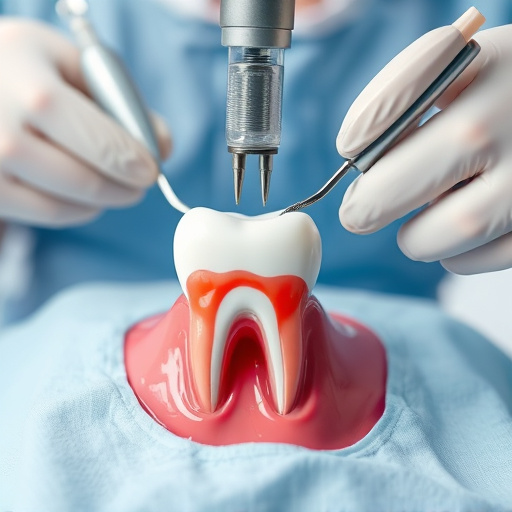A gum health evaluation is a vital component of oral hygiene, focusing on detecting inflammation, bleeding, and recession through visual exams, patient history, and advanced tools like periodontal probes and X-rays. Early intervention strategies based on these evaluations prevent periodontal issues from progressing into complex dental emergencies that may require extensive treatments like dental crowns. Regular assessments in general dentistry practices prioritize proactive measures to preserve healthy gums and teeth, mitigating future complications and reducing systemic health risks through comprehensive care, dietary guidance, and stress management techniques.
A gum health evaluation is more than just a dental checkup; it’s a crucial step towards maintaining optimal oral wellness. This preventive approach focuses on early detection of periodontal issues, allowing for timely intervention before they escalate. By understanding the key components of a comprehensive gum assessment, individuals can take charge of their oral health. This article explores these evaluations, highlighting their significance and the numerous benefits of embracing proactive measures for improved gum health.
- Understanding Gum Health Evaluation: The Foundation for Early Intervention
- Key Components of a Comprehensive Gum Health Assessment
- Encouraging Early Action: Benefits and Strategies for Optimal Oral Care
Understanding Gum Health Evaluation: The Foundation for Early Intervention
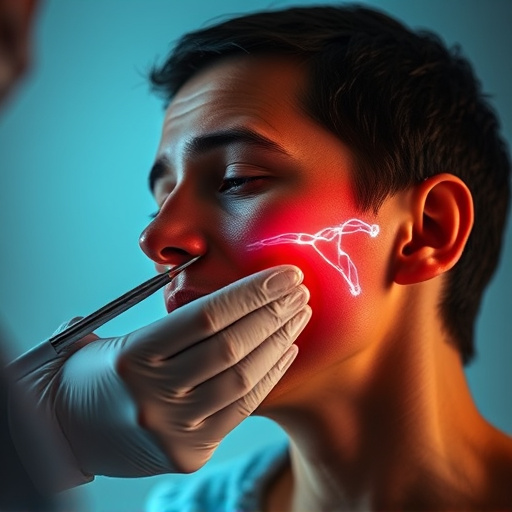
Gum health evaluation is a crucial step in maintaining optimal oral hygiene and overall well-being. It involves a comprehensive examination of your gums to identify any signs of gum disease, such as inflammation, bleeding, or recession. This process serves as the foundation for early intervention strategies, which are vital in preventing the progression of periodontal issues from manageable to severe. By identifying potential problems at an early stage, dental professionals can guide patients towards appropriate treatments, ensuring better long-term oral health outcomes.
Understanding the significance of gum health is key to recognizing the need for regular evaluations. These assessments go beyond a simple visual check, often utilizing advanced tools and techniques to detect even the subtlest abnormalities. Early intervention can prevent minor issues from escalating into emergency dental care scenarios, where more extensive procedures like dental crowns might become necessary. General dentistry practices emphasize these evaluations as a proactive measure to preserve healthy gums and teeth, thereby reducing the risk of future complications.
Key Components of a Comprehensive Gum Health Assessment

A comprehensive gum health assessment is a multifaceted process that involves several crucial components to ensure a complete understanding of oral well-being. The initial step includes a thorough visual examination, where dental professionals inspect the gums for any signs of inflammation, bleeding, or receding gingiva. This visual evaluation is often accompanied by a detailed patient history, delving into factors like smoking habits, medication use, and general health conditions that might impact gum health.
Furthermore, advanced diagnostic tools such as periodontal probes and X-rays are employed to measure pocket depth and assess bone loss, providing a more precise picture of gum disease severity. During this assessment, the dentist or hygienist may also check for specific conditions like gingivitis or periodontitis, which require timely intervention through preventive dentistry measures, including regular cleaning and, in some cases, cosmetic fillings or dental fillings to address any decay or damage.
Encouraging Early Action: Benefits and Strategies for Optimal Oral Care
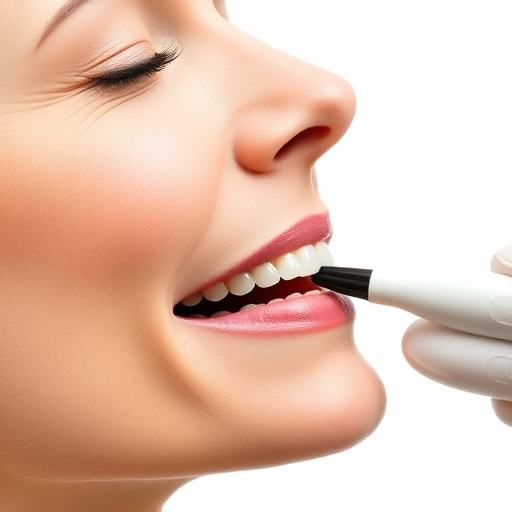
Encouraging early action when it comes to gum health is a cornerstone of optimal oral care. A gum health evaluation, often incorporated into routine oral exams at your family dentistry practice, plays a pivotal role in this regard. By identifying potential issues early on, such as gingivitis or periodontitis, dental professionals can guide patients towards implementing effective strategies for maintaining excellent gum health. This proactive approach not only prevents the progression of periodontal diseases but also reduces the risk of associated systemic health problems.
Implementing comprehensive dental care practices, including regular brushing and flossing, along with routine oral exams, forms the backbone of this preventive strategy. Additionally, dental professionals can offer personalized guidance on dietary choices, oral hygiene products, and even stress management techniques, all of which contribute to a healthier gumline. Early intervention through these means fosters a lifetime of improved oral health and well-being.
A gum health evaluation is a powerful tool that can transform oral care practices. By focusing on early intervention, individuals can prevent severe periodontal diseases and preserve their dental well-being. Through key assessments, from checking gingival inflammation to assessing bone loss, professionals can identify subtle issues. Encouraging patients to act promptly can lead to healthier mouths, reduced risk of systemic complications, and improved overall quality of life, emphasizing the importance of regular gum health evaluations as a game-changer in oral care routines.


